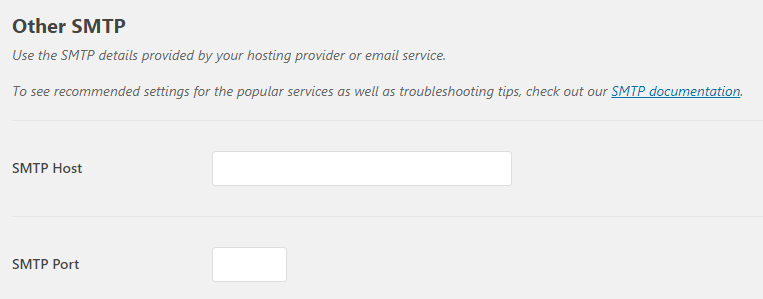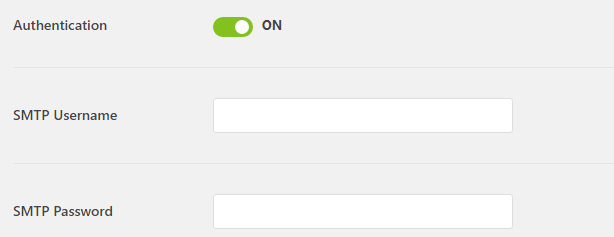How to Send Emails from WordPress Using an SMTP Server (In 3 Steps)
WordPress is capable of sending emails out of the box. However, its email functionality is limited to basic messages, such as registration confirmations and password change requests. If you want to create a more complex email campaign, the core functionality will probably leave you wanting.
The solution to this problem is to use a different service to take care of your emails, such as a Simple Mail Transfer Protocol (SMTP) server. With this tool you’ll be able to send more complicated messages, such as email campaigns that involve large lists of subscribers. You can also rest assured that your emails will always be delivered correctly.
In this article, we’re going to talk about why it makes sense to use SMTP rather than WordPress’ built-in email functionality. Then we’ll teach you how to set up two SMTP providers to work with WordPress, using the WP Mail SMTP plugin. Let’s get to it!
Why You Should Use an SMTP Server to Handle Your WordPress Emails
WordPress sends its emails from the same server you use to host your website. While this approach can be useful sometimes, the functionality you get to work with is limited. Plus, your server might not be configured to handle email properly. It’s also worth noting that WordPress uses PHP to handle its email functions, which is not the most reliable method.
A better solution is to use a Simple Mail Transfer Protocol (SMTP) server to send and receive emails. These servers have more expansive functionality, and are safer than relying on PHP. This is vital, as marketing emails can be an essential part of growing your website and gaining more conversions.
Email campaigns help you stay in touch with your visitors, and drive more traffic and conversions on your site. However, you’ll only see these benefits if you use a reliable email solution. The best part is that most services offering SMTP servers also include email marketing features. That means you can use them to ensure that your website’s emails arrive as intended, and are as effective as possible.
How to Send Emails from WordPress Using an SMTP Server (In 3 Steps)
Integrating SMTP servers with WordPress is simple, thanks to plugins such as WP Mail SMTP. This particular tool enables you to configure an SMTP server of your choice in minutes, and it works with several of the most popular options available online. Let’s walk through how to configure the plugin using two different SMTP platforms!
Step 1: Choose an SMTP Email Server and Locate Its Integration Details
You have plenty of options when it comes to SMTP email servers. In some cases, you can even find services that offer limited service for free, such as Mandrill and SendGrid.
Mandrill is a MailChimp app that enables you to send ‘transactional’ emails and automated campaigns:

This service works with the MailChimp platform, so you get access to additional features such as email builders and analytics. However, Mandrill is not a part of MailChimp’s free plan. To use it, you’ll need to pre-purchase emails in blocks of 25,000, which start at $20.
SendGrid, on the other hand, packs a lot of the same features that MailChimp does:

However, this service does include SMTP emails as part of its free plan. You can send up to 40,000 emails for free during one month using SendGrid’s free trial, and up to 100 messages per day at no cost from then on.
SendGrid can therefore be a better option if you’re on a budget. However, its 100 email-a-day limit falls short quickly once your website becomes popular. Pre-purchasing blocks of 25,000 emails from Mandrill, on the other hand, should be enough even for popular sites.
Either way, once you’ve picked a service you’ll need some information in order to set it up. From SendGrid, you’ll have to get an API key. If you go with Mandrill, on the other hand, you’ll need your SMTP details. Then, you can move on to the next part of the process.
Step 2: Configure Your SMTP Server Using the WP Mail SMTP Plugin
Next, you’ll want to install the WP Mail SMTP plugin and activate it. You can then navigate to the new Settings > WP Mail SMTP tab in your dashboard, where you can set the email address your SMTP server will use to send messages from. If you leave this setting blank, the plugin will use [email protected] as the default:

After that, you can choose the name that will be used as the sender for your emails. You can set this to either your own name or your website’s name, depending on your preferences:

Finally, the WP Mail SMTP plugin will ask you to choose your Mailer, which is the SMTP service you picked during the previous step. If you choose SendGrid, the plugin will ask you to enter your account’s API key:

You’ll notice that there isn’t an option for Mandrill out of the box. However, you can still use it as your SMTP server by clicking on the Other SMTP option at the bottom of the screen. If you do this, the plugin will ask you for your SMTP host and port:

As we mentioned earlier, you can find all this information within your Mandrill account. Keep in mind, however, that you’ll also want to enable the Authentication setting, so the plugin can connect to your Mandrill account using your username and password:

When you’re done, click on Save Settings at the bottom of the screen. Then, you can move on to the last step.
Step 3: Test Your New SMTP Server
You should now test to see if your new SMTP server is working as expected. To do this, go to the Settings > WP Mail SMTP > Email Test tab, and type your own email address into the only field you’ll find there:

Then, click on the Send To button to send a test email to yourself. If everything is working, a Your email was sent successfully! message will pop up near the top of the screen:

If you see an error message instead, you should double-check your API or SMTP settings, depending on which service you chose. Then repeat the test, until the email is sent and delivered properly. When your test email arrives in your inbox successfully, you’ll know that your SMTP server is ready to go.
Conclusion
WordPress is a powerful platform that can handle a lot of unique projects. However, it’s not at its best when it comes to email functionality. Looking outside the platform for a solution, such as by using an SMTP server, can provide a better experience. This will ensure that your messages always arrive promptly, and that you can handle a large number of subscribers.
When it comes to setting up an SMTP server to work with WordPress, we recommend using the WP Mail SMTP plugin. Here’s how to do that:
- Choose an SMTP email server, such as Mandrill or SendGrid, and get your integration details.
- Install the plugin, and configure your SMTP server’s settings.
- Test your new SMTP server.
Image credit: Pixabay.
